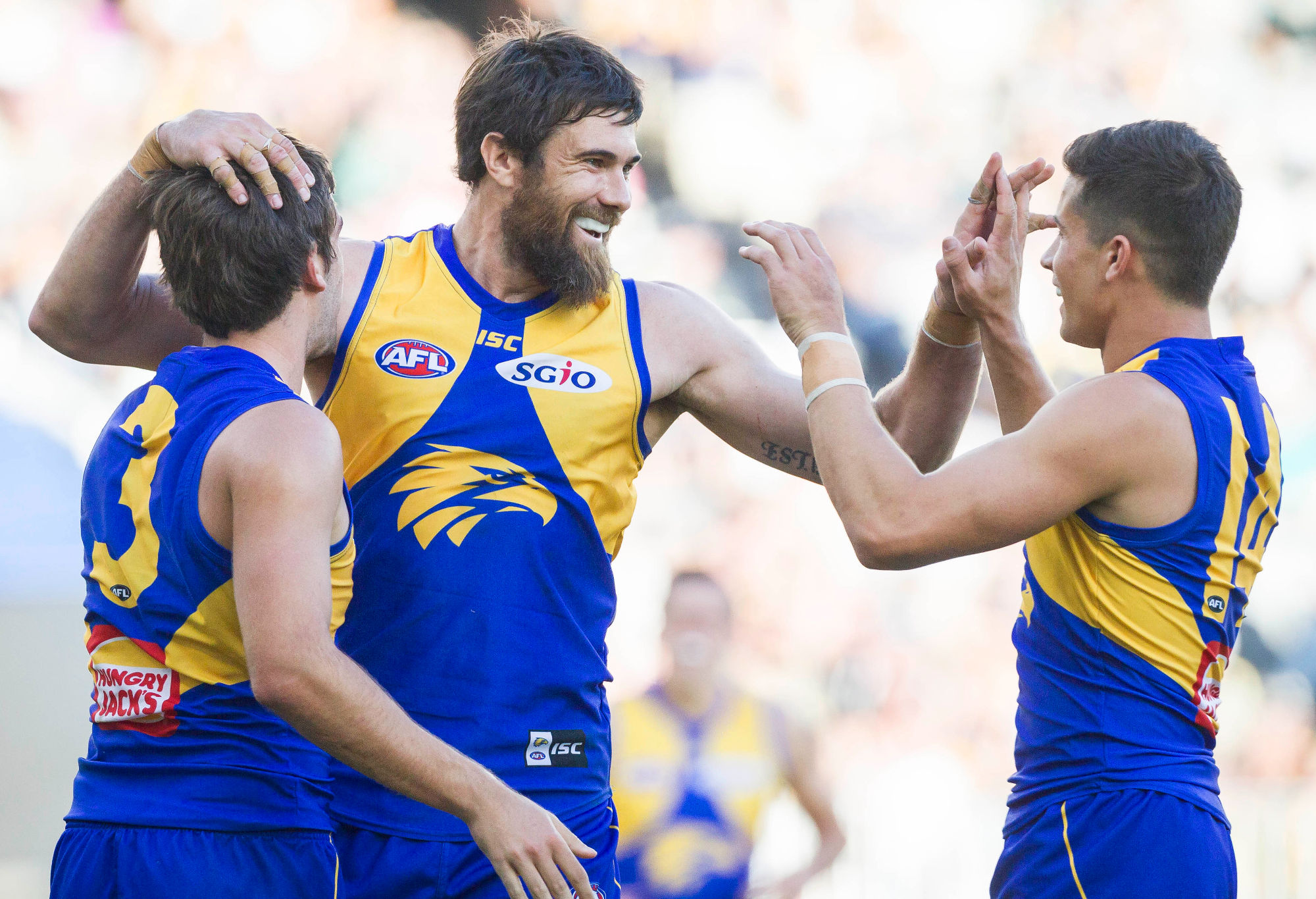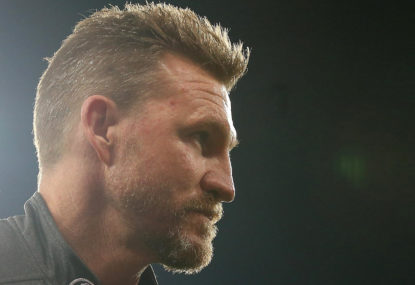Hands up who picked this match-up before the beginning of the season? It wasn’t supposed to be this way, but now it is, and the winner of Eagles-Magpies takes their first step towards the players’ race on grand final day.
Neither West Coast nor Collingwood were projected to finish inside the top eight in March, let alone end up with a double chance come September.
Making it even more remarkable are the various setbacks the two teams have faced.
The Pies have used 38 players on the season, while the Eagles have used a surprisingly low 33 players. In the context of the season and its evolution though, both sides are hitting this one with what looks like their emergent best 22 (considering season-ending injuries).
Collingwood has selected Tyson Goldsack, Jeremy Howe and Adam Treloar, who have all had significant health concerns – Goldsack in particular, who is returning less than six months after an ACL tear. Out of their Round 23 side go Jack Magden, Nathan Murphy and Adam Oxley.
West Coast will enjoy the return of Lewis Jetta to the half back line, and are significantly buoyed by Josh Kennedy’s first game since Round 18 in an injury-interrupted year. His return means the Eagles will go to market with their first choice forward line – Mark LeCras, Jamie Cripps, Jack Darling, Kennedy, Willie Rioli and Liam Ryan – for the first time in 2018.

AAP Image/Tony McDonough
You could spin that in either direction. It’s good, because West Coast will have their first-choice forward line as a collective; it’s bad, because the unit hasn’t played a meaningful minute of football this year. I am of a mind to put the positive spin on it for one key reason.
In the 11 games Kennedy has suited up for in 2018, West Coast have managed 0.53 shots per inside 50. In the 11 games he’s missed, that figure drops to 0.47 shots per inside 50. The insertion of Kennedy helps West Coast’s ability to generate scoring opportunities – he straightens up the midfield, provides an option on the flank when required, and helps cascade the defensive assignments of the opposition.
The latter is particularly important against Collingwood, given the return of Howe and Goldsack bolsters what was a clear weak spot for the Pies heading into September. Their back six had been undersized since Howe’s injury, which would’ve been a concern given Kennedy’s return. Instead, Goldsack becomes the stopping full back, while Howe can help the rising Tom Langdon with the Jack Darling match-up, as well as provide general aerial support.
The Eagles have the means to stretch Collingwood even further if they want, given they remain steadfast in their desire to play two ruckmen. It would be an interesting look, but not one I see West Coast going to frequently unless things go pear-shaped.
Collingwood’s midfield is well placed to generate plenty of possession and territory, particularly with Treloar and his line-breaking speed back to wreak havoc. The Pies have the best clearance differential in the competition (+3.8 per game), and are fourth for time in possession differential (+2.4 minutes per game). In their wins, both numbers rise by around 50 per cent.

Photo by Adam Trafford/AFL Media/Getty Images
Rucks don’t matter much in 2018, unless you have or are playing against one of the guys that sits atop the tree. Brodie Grundy is one of those guys. One of the biggest reasons Melbourne got over the top of West Coast in Round 22 was Max Gawn’s dominance both at stoppages and around the ground. Scott Lycett and Nathan Vardy were mostly ineffectual, save Vardy in West Coast’s forward line.
Of course, last time out was the game in which Nic Naitanui tore the ACL in his left knee. West Coast had a ruckman that mattered, and now they don’t.
The Eagles beat Collingwood by 35 points in that outing – at the MCG – on the back of their kick-mark game, which limited the influence of the Pies’ handball-centric system. The home side had the edge in pretty much every counting stat except marks (94-117), contested marks (7-13) and kicks (204-241). The Eagles took care of the ball, executing just 29 non-free kick clangers to Collingwood’s 52 (their second largest tally of the year).
That one statistic looms as large as any heading into this game. Collingwood play a frantic brand of football, where West Coast are far more zen. If the Eagles get their outside game going, it will be tough for the Pies to create the maelstrom of quick movement they crave.
Interestingly, West Coast’s simple home field advantage (average home margin less average away margin, divided by two) is a relatively weak six points, though that is possibly a reflection of the team’s uncharacteristic strength on the road. If home advantage is partially a reflection of ground size, then the MCG-ish dimensions of Perth Stadium will hold no fear for the Pies.
So, can Collingwood smack West Coast between the eyes with enough force (and frequency) through the midfield that their outside game is blunted? The market certainly doesn’t think so. And neither do I.
However, this game will be much closer than many pundits suggest. Collingwood have not been blown out in any of their home-and-away games this year, and West Coast only blew out one of their opponents. The Pies’ scheme helps keep them in games, creating quick counterattack opportunities no matter the margin.
West Coast’s system has busted handball-heavy teams all year and seems as likely to do so here as any of the favourites in Week 1. My pick is the Eagles, by 12 points.
That’s my qualifying final forecast, what’s yours?































































































